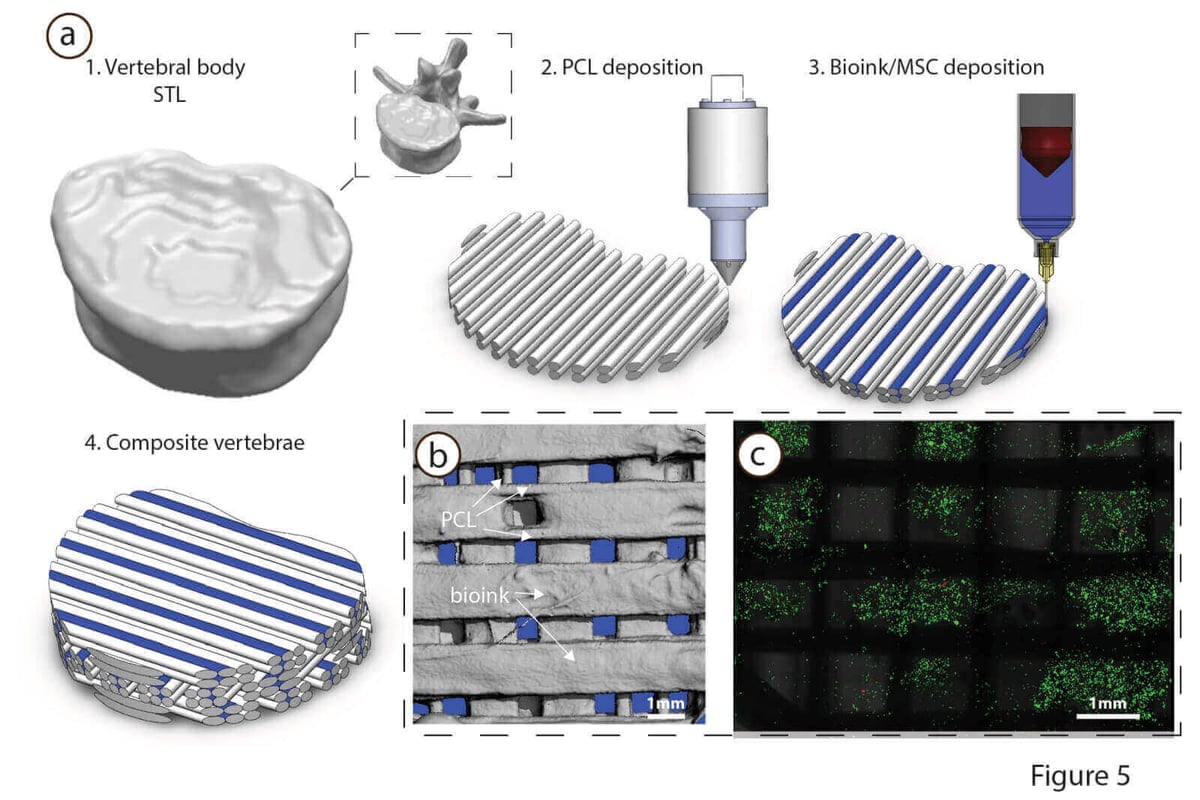Painful bone grafts could soon be a thing of the past, thanks to 3D printed bone implants invented by researchers at Trinity College, Dublin.
A group of scientists at Trinity College Dublin have developed 3D printed bone implants with the potential to fix serious injuries and bone defects, rather than by using painful bone grafts.
Researchers at the Advanced Materials and Bioengineering Research Centre (AMBER) at Trinity College, Dublin, used a 3D bioprinter to fabricate cartilage from stem cells and bio materials. When implanted into the body and successfully adopted, they would be able to regenerate broken bones
One of the main researchers on the project is Trinity College’s School of Engineering Professor, Daniel Kelly. He explained to Digital Trends:
“Our bones begin life as a simpler cartilage template, which develops into a more complex tissue as we grow. So we have instead used bioprinting technology to fabricate mechanically reinforced cartilage templates in the shape of an adult bone, and demonstrated that these tissues develop into functional bone organs following implantation into the body.”
A full paper on their findings, 3D Bioprinting of Developmentally Inspired Templates for Whole Bone Organ Engineering, was presented by Kelly at the Five-Year Trinity Biomedical Sciences Institute (TBSI) Symposium in Dublin on 5 September.
See the process in action in the video below:
How are the Bone Implants Made?
The stem cells are printed in hydrogel using a RegenHU 3DDiscovery multi-head bioprinter. While one extruder is printing the cells in a predetermined shape, another extruder overlays it with a bio material to form a composite.
Once printing is complete, the structure is kept for four weeks in an incubator together with molecules which encourage stem cells to turn into cartilage. After the process, the 3D print will become a template which can be implanted and blood vessels will develop in the tissue.
This means bones should be able to grow back naturally, and could lead to huge advancements in medical treatment. Kelly added: “Here the bio-inks are designed to provide an environment that enables the conversion of this precursor tissue into a more complex organ.”
Of course, there’s a way to go before these bone implants become common practice. Bone regeneration is an incredibly slow process, and the team does not yet know how long it would feasibly take to regrow a bone in this way. To date, they have only succeeded in getting the bone to grow in a mouse using cells from a pig.
Kelly is optimistic, however. ”We see this as a platform technology for treating a range of diseases and injuries to the musculoskeletal system, ” he said.
“We are currently working on developing this technology to bioprint biological implants that could be used to regenerate diseased synovial joints. Such strategies may eventually be used as an alternative to metal and polymer joint replacement prostheses.”
We live in exciting times. What do you think about these 3D printed bone implants? Let us know in the comments.

License: The text of "Medical Breakthrough with 3D Printed Bone Implants" by All3DP is licensed under a Creative Commons Attribution 4.0 International License.